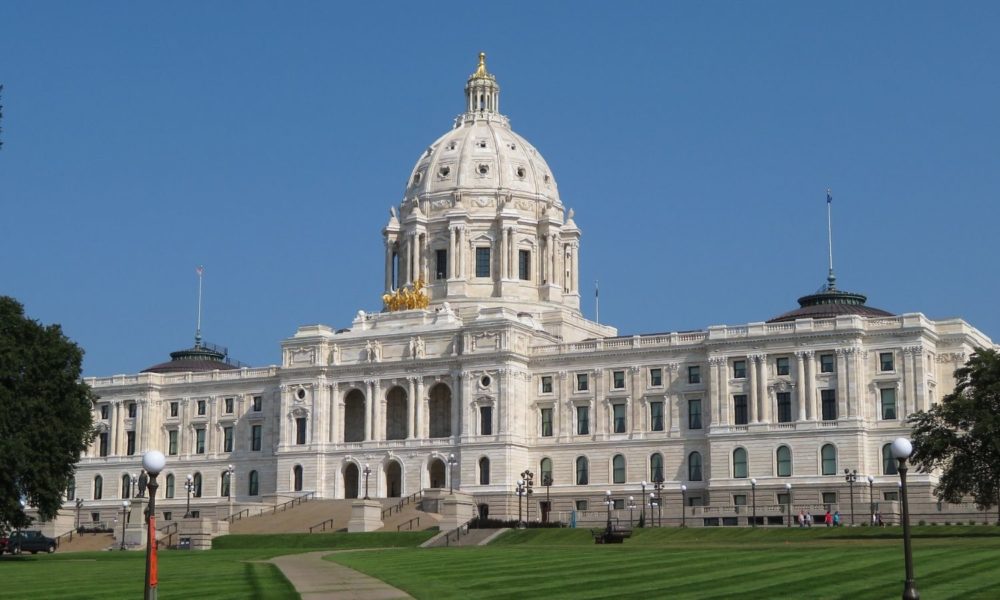Minnesota needs substantial investments now to build toward an equitable clean energy future. The good news is, Minnesota legislators have a chance to pass the level of investment needed to set the state on a path to a carbon-free economy. The bad news is, they have to find a compromise between two vastly different clean energy bills—by Monday.
The science is clear: Limiting the adverse effects of climate change requires rapid reductions in emissions now. Policymakers have a brief window to enact the policies necessary to halve heat-trapping emissions within this decade, including significant investments in decarbonizing the power sector and electrifying sectors such as transportation and buildings. Minnesotans are already experiencing the climate crisis, as well as health impacts, from burning fossil fuels. At the same time, the state is not on track to meet its economy-wide global warming emissions reductions targets.
A recent Union of Concerned Scientists analysis found that Minnesota could meet its electricity demands with 100-percent renewable energy by 2035, which would provide significant economic and health benefits. But to reach that future, Minnesota has to invest in it and build it first.
Unfortunately, the Minnesota Senate and House of Representatives have two very different ideas of the level of action—and funding—required. Whether state legislators can bridge the chasm between two versions of a major energy and jobs spending package this week and pass legislation that would accelerate renewable energy remains to be seen. With such a wide gulf to cross, Minnesota could miss another opportunity to advance many key clean energy programs.
House Approves Historic Clean Energy & Climate Investments
The Minnesota House has shown strong leadership in addressing the climate crisis and funding the clean energy transition at the scale necessary to swiftly curb heat-trapping emissions from fossil fuels. Earlier this month, it passed a massive jobs, economic development, climate and energy omnibus bill. The bill contains a level of funding for clean energy and climate programs never before seen in Minnesota: more than $120 million. A little more than $40 million of the package would be financed by Minnesota’s Renewable Development Account, which Xcel Energy is required to pay into as a condition of storing its nuclear waste. The remainder—$80 million—would be appropriated from the state budget’s general fund—less than 1 percent of the projected $9.3 billion budget surplus.
The bill the Minnesota Senate passed, on the other hand, is nearly 10 times smaller.
The policies and programs in the House version of the omnibus bill would significantly accelerate the adoption of renewable energy, increase rooftop solar and other distributed generation, and reduce reliance on fossil fuels. The more of that we do, the more economic and health benefits the state will see.
The House bill invests in many key areas to support Minnesota’s clean energy transition, including:
- $30 million to expand the weatherization assistance program to increase access to energy efficiency for low-income residents by increasing the weatherization workforce and supporting pre-weatherization measures such as addressing roof or mold issues. State investments in weatherization would reduce emissions from the power sector, contribute to healthy homes, and save money on energy costs for Minnesotans, especially those who are already struggling with high energy burdens.
- $20 million for a state competitiveness fund to unlock federal funding through the Infrastructure Investment and Jobs Act to maximize Minnesota’s opportunities to receive federal support on clean energy infrastructure investments ranging from electric vehicles to energy storage.
- $11.1 million to support electric vehicles, including charging infrastructure and bus electrification. Investing in transportation electrification would not only reduce climate impacts from Minnesota’s largest source of global warming emissions, but would reduce particulate matter air pollution, which disproportionately harms Black, Latinx and low-income Minnesotans.
- $4 million to incentivize energy storage systems paired with solar, modeled after the existing solar rewards program. Investing in storage would facilitate a more resilient, renewable and economic grid. Energy storage can reduce peak demand and reliance on fossil fuels, while helping integrate high levels of renewable energy reliably. Energy storage also can provide important equity benefits: reducing emissions in environmental justice communities, providing cost savings, and strengthening community resilience.
- $2.2 million for Residential Electric Panel Upgrade Grants, which would enable broader access to the benefits of building electrification and remove a key obstacle to both residential electric vehicle charging and reducing reliance on fossil fuels for heating and cooking.
- $8 million for solar projects on state buildings.
- $3 million in local government climate action grants to incentivize the creation of local climate action plans.
The Senate Bill Still Includes Some Key Provisions
Both the Senate and House bills would expand Minnesota’s Solar for Schools program and funding for the solar energy production incentive program. Both bills also fund a community energy transition grant program to support a just transition for frontline communities. Other than that, they have little in common.
On the Road to 100-Percent Clean Energy
In 2019, Minnesota Gov. Tim Walz announced a set of policy proposals to achieve 100-percent carbon-free electricity by 2050. Two years later, he accelerated that plan by 10 years. The House has twice passed a 100-percent carbon-free electricity standard in line with the governor’s pledge—first in 2019, then again in 2021. Both measures failed to clear the Senate. The Senate’s lack of support for clean electricity standards and clean energy funding are holding Minnesota back.
Minnesota has a critical opportunity to make up for lost time and lay the groundwork to achieve 100-percent carbon-free electricity by leveraging Minnesota’s budget surplus—as well as the bipartisan infrastructure law—to fund programs that would boost solar, energy efficiency, energy storage, electric vehicles, and more. Now is the time for Minnesota legislators to pass the level of investment needed to put us on a sensible path toward deep emission reductions and surging renewable energy. This moment requires historic investments in climate action and a just transition—much more than what the Senate has proposed.
Without the level of investment required to accelerate the clean energy transition, Minnesota will continue to lag in climate leadership and fall behind on emission reduction targets—targets that are already out-of-date and insufficient according to the latest climate science. Every year that goes by without action puts the state at higher risk from the climate crisis and limits Minnesotans’ access to cleaner air and clean energy jobs.
As long as the Minnesota Senate remains a limiting factor in the state’s climate progress, the gap between where we are and where we need to go will only widen. The Legislature must act now and pass the biggest possible clean energy and jobs package to secure a more healthy, resilient and equitable future for Minnesota.
If you are a Minnesota resident, tell your state legislators to support funding for key clean energy programs now.

